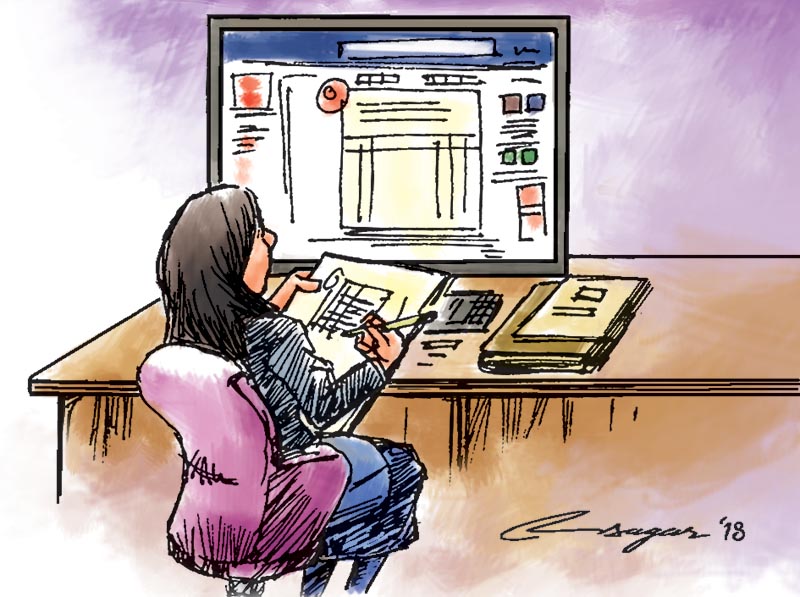Cybergogy to heutagogy: For engaged learning
By using cybergogy to heutagogy pedagogical approach, we can teach and prepare our students to survive and thrive in a global economy and help them become capable to apply skills and competence effectively
The use of ICT (Information and Communication Technology) has created a new teaching and learning concept in education pedagogy known as cybergogy. Cybergogy concept/ strategy is a virtual learning environment for the advancement of cognitive, emotional and social learning of the students.
In today’s context, people of all ages are familiar with technology. The advancement and use of ICT in teaching-learning activities have greatly affected the learning environment of the students.
Cybergogy focuses on helping students from young to adults to learn easily through the virtual environment. In fact, distance /online learning is the outcome of cybergogy.
Cybergogy model of teaching is recognised as an innovative way of instructional design using ICT and cyberspace. Cybergogy learning encourages adult students and children to use computers and internet to obtain module, information, reports and other kinds of reference. Cybergogy combines the fundamentals of both pedagogy and andragogy (adult learning) and grabs the benefits of technology-enabled learning for a better learning outcome.
In this connection, the heutagogical approach can be taken as one of the competitive approaches of teaching and learning in the present global context where learning can take place from any part of the world by using ICT in the formal, informal, and non-formal way.
Heutagogy is an added value to pedagogy, andragogy, synergogy and cybergogy. It is a self-determined learning based on humanistic theory guided by technology-based learning design that provides opportunities to learn, laying distinct emphasis on learning, ways to learn and on learning to create opportunities.
Here, the student/ learner is self-motivated and autonomous in learning and is primarily responsible for deciding what will be learned and how it will be learned.
This approach mainly focuses on “learning the content” to “learning to learn”. Besides, it also focuses on developing life-long learning skills in students through active and proactive learning processes.
Heutagogy is a student-centric teaching and learning strategy where the learning is determined by the learner. A heutagogical learning environment facilitates development of capable learners and emphasises both the development of learner competence as well as the development of the learner’s capability and capacity to learn. It is also a pedagogical approach that could be applied to emerging technologies in distance education.
The main differential factor of heutagogy from other pedagogical approaches is the idea of ‘”double-loop learning”. Double-loop learning is the act of challenging the theories in use, values and the assumptions rather than simply reacting to problems. This results in action and generates new knowledge in teaching and learning activities. In double-loop learning students/ learners are both psychologically and behaviourally engaged. They not only reflect on what they have learned, but also the way in which the new knowledge has influenced their values and belief system.
As per heutagogical approach, learning is an extremely complex process that takes place within the student in which student/ learner learns at a time determined by the student himself, not by the teacher. Learning is associated with making new linkages in the brain involving ideas, emotions, and experience that lead to new understanding about self or the world. Students and teachers who follow heutagogy education are able to analyse, understand concepts, and synthesise existing experience and knowledge in a creative and innovative way. By incorporating heutagogical practice in the classroom, teachers have the opportunity to better prepare students for the workplace and for becoming lifelong learners and developing different skills like cognitive and meta-cognitive skills such as creativity, self-directedness, innovativeness, communication, collaboration, digital literacy, and curation required by the competent workforce.
Heutagogy learning basically consists of: explore, create, collaborate, connect, share and reflect. In exploration, students are given the freedom and opportunity to explore a variety of paths and sources of knowledge. Another important design element of heutagogy is giving the learner the freedom to create. This can be achieved by using a variety of learning approaches – writing, designing and drawing. One useful learning approach is creating mind maps.
Connections are a critical aspect within heutagogy. Through connections, opportunities to new avenues of learning can be created with people across the globe through social media. Once students start connecting, they can begin sharing. By sharing information with each other, students become able to learn from each other’s knowledge and experience.
By using cybergogy to heutagogy pedagogical approach, we can teach and prepare our students to survive and thrive in a global economy and help them become capable to apply skills and competence effectively and creatively to ever-changing situations and unlock their creativity and innovation through their communication, cognitive, meta-cognitive, collaborative and digital skills.
Joshi is faculty member at Patan Multiple Campus






